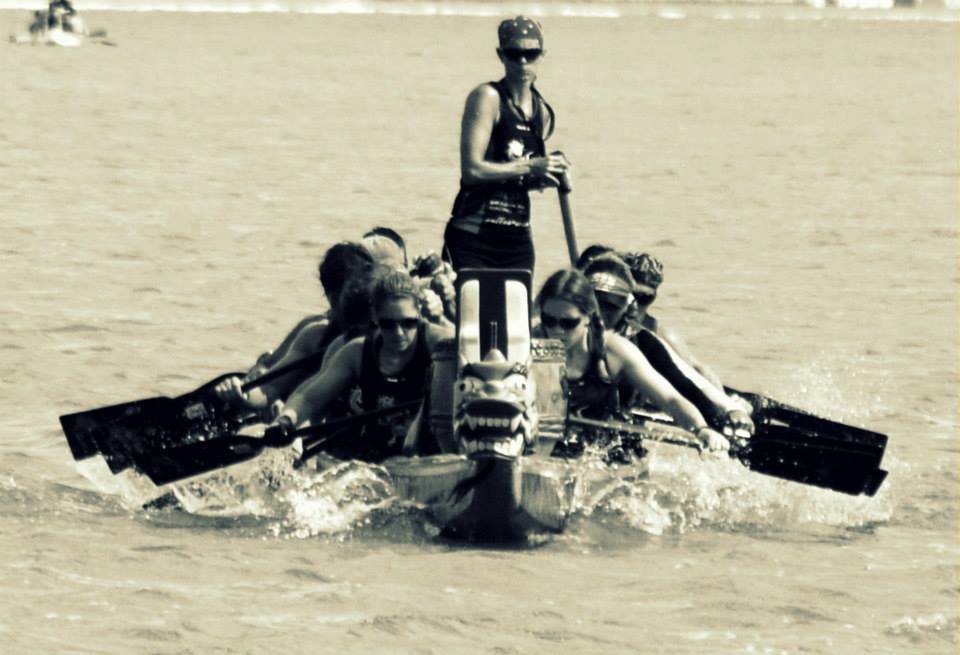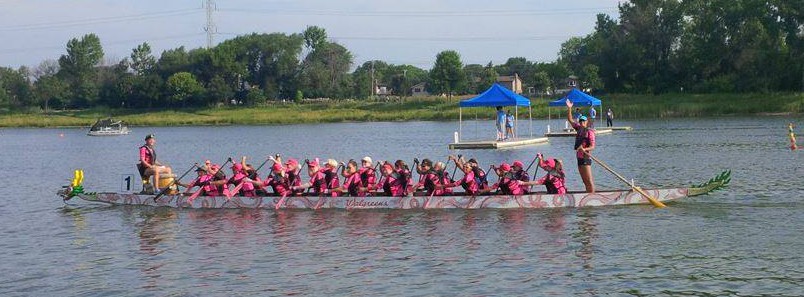Looking to Raise the Bar? 5 Steps to Making Your Recreational Team More Competitive
A team cannot suddenly become competitive overnight. It’s likely that there are already several paddlers who are keen to take it up a notch and are quite willing to put in the time and effort to do so. But how do you convince the others to follow suit? And what do you do with those who will not? If your team is large enough, perhaps you can have both a competitive team and a recreational team within the larger umbrella of your entire team. This, however, is typically unlikely as most fun, social teams are still newer to the dragon boat scene and therefore do not have the depth of their roster to field two teams; often just filling one boat for a race is challenging enough. Focus on retaining those who are interested in advancing and you will elevate your team.
How do you know when your team is ready to move to a more competitive level? Here are some indications:
- Paddlers have a high interest level in paddling and attend practice frequently
- Paddlers start to seem bored with the recreational competition level
- Paddlers see higher-level paddlers and want to be like them
- Paddlers are able to commit to more frequent practices and more strenuous training
- Paddlers like competition
Assuming that the majority of the team is on board with the decision to become more competitive, or that the board of directors, executive committee, or other governing body has made the decision for the team, the next steps taken can make or break a team.
You cannot place inexperienced or lower-level paddlers on a race boat and expect to compete with the big dogs. Tweet it!
1) Seek out Coaching. If a team has simply been gathering for practices but has not really had much structure in terms of coaching, it would be beneficial to recruit or hire a coach. This is not an easy task and may even require hiring a coach from outside your city to come in for a weekend clinic to teach some fundamental drills and basic technique concepts which can then be implemented throughout the season. If bringing in a coach is not feasible, appointing one or two people within your team to coach and give structure to the practices is crucial. Select paddlers who not only have shown strong leadership and paddling abilities, but who also have a “team player” attitude and who will be willing to sacrifice their own paddling time to help others. In addition, these paddlers should be able to attend nearly every practice. An absent leader results in a lack of attendance at practice.
2) Set a Firm Practice Schedule. A team should decide on how frequently practices will take place. Is twice a week enough? Three times per week? More? Set a schedule and stick to it. Cancel practices only due to weather issues or lack of attendance. If lack of attendance is a continuous problem, perhaps that practice day needs to be changed to another day to better accommodate your paddlers’ schedules.
3) Establish a Consistent Practice Program. Once you have determined your practice days, it is helpful to have a set program for each practice. For example, a possible plan might be that Saturday practices include drills and longer endurance pieces, Tuesday practices are comprised of drills and sprint pieces, and Thursday practices consist of drills and specific technique work. Your paddlers will benefit from knowing the expectations of each practice, especially if practices used to be more of a fun, social activity.
4) Engage in Testing. When your practices are in place and your team is committed to training as regularly as possible, you are on your way to competing at a higher level than ever before. After you take it up a notch or two, you need to have a method of selecting the top paddlers who are able to compete at this new level. The old, all-inclusive approach to creating a boat layout for races will no longer work. You cannot place inexperienced or lower-level paddlers on a race boat and expect to compete with the big dogs. So, how do you determine who is ready? Who makes the race boat?
There are many different methods of testing that enable coaches to rank their paddlers. The important thing to remember is that there is really no wrong way to do this. Various coaches employ various methods of testing. The goal is to determine paddlers’ abilities in relation to their fellow paddlers. If you have the time, I suggest a combination of testing that assesses endurance, strength, and paddling ability. I will discuss various types of tests in a future blog post.
5) Make Your Testing Procedures and Results Transparent. Aside from vampires, no one likes to be kept in the dark. Carefully explain to the team what testing procedures you intend to use, use them consistently for all paddlers, and then publish the results. Having your testing results available for everyone to see will help give paddlers an idea of where they are ranked in terms of their teammates. Yes, you are sure to have questions as to why Susie made the race boat over Sally, and why Bobby made it over Billy, but that is an inevitable part of leading a team. If your team has recently become competitive, you must be prepared to provide such explanations, as difficult as it might be to discuss with your paddlers. It is never easy to tell a paddler that they aren’t ready for the race boat, especially when they were accustomed to racing all the time when the team was more recreational. However, your team will appreciate the open discussion much more than simply sending out a list of who made the team and leaving it at that.
With patience and dedication, you should be able to successfully make the transition from a recreational team to a more competitive team. It will take time and perseverance, but is well worth it if your goal is to improve your team’s paddling ability. A word of advice: once you make the decision to become more competitive, stick with it and do not waver from that decision. You will have some on your team who are not happy with the idea, but for the most part, your team is likely to welcome the new challenges. Those who are disgruntled by the changes and unwilling to compromise are probably a hindrance to the team anyhow and perhaps would be a better fit for another team. Keep your focus on your team’s goals and don’t let the fear of a few teammates hold your team back. “Progress is impossible without change, and those who cannot change their minds cannot change anything.” – George Bernard Shaw









Excellent article! Do you have any advice for a drummer that is making the transistion from a recreational to a competitive team?
Excellent question! I wrote a blog about the importance of your steer and drummer (April 28), which would certainly be good for you to read. It will give you an idea of what is expected of a drummer on a competitive team. Depending on how your team uses the drummer, you will most likely be expected to demonstrate much more of a leadership role – commanding, encouraging and driving the team towards success. Assertiveness is key and if you aren’t already an assertive individual, you will need to become one for sure. Don’t be timid up there – they are looking to you to give them an idea of where they are on the race course, both in terms of distance from the finish and positioning relative to other teams. Be positive, but firm, in telling the team what you need from them in terms of power. And always keep your voice calm, yet strong (don’t get excited and shrill – it makes the paddlers anxious).
Best of luck! I’m sure you’ll do great!!!
This post comes at a very strategic time for our team. I’ll be sharing it. Thx, Kristin!